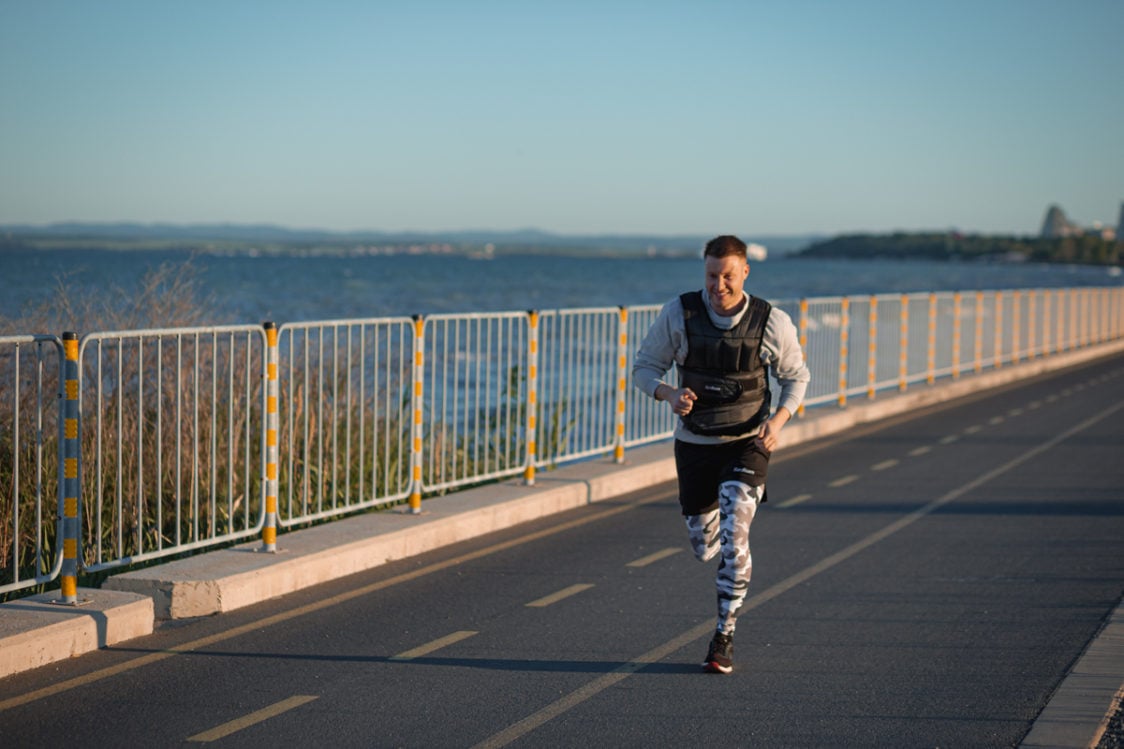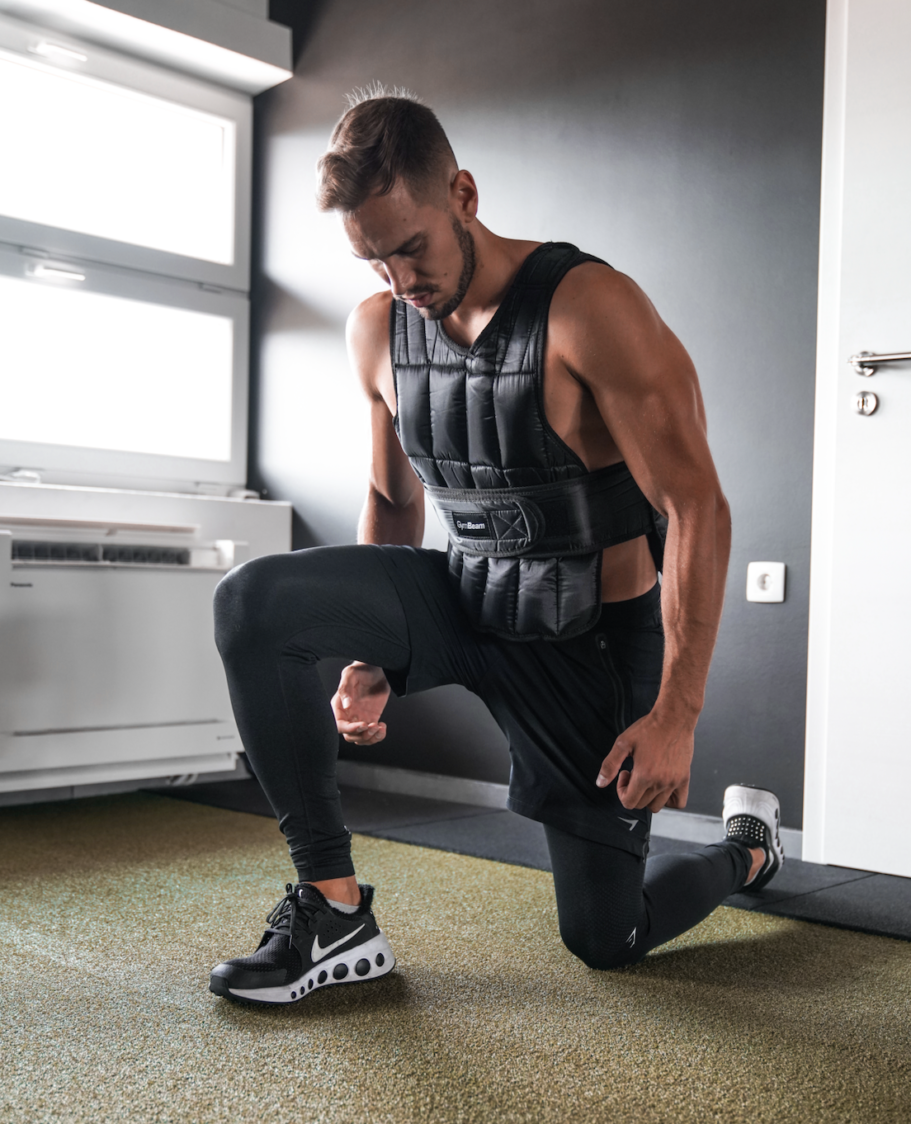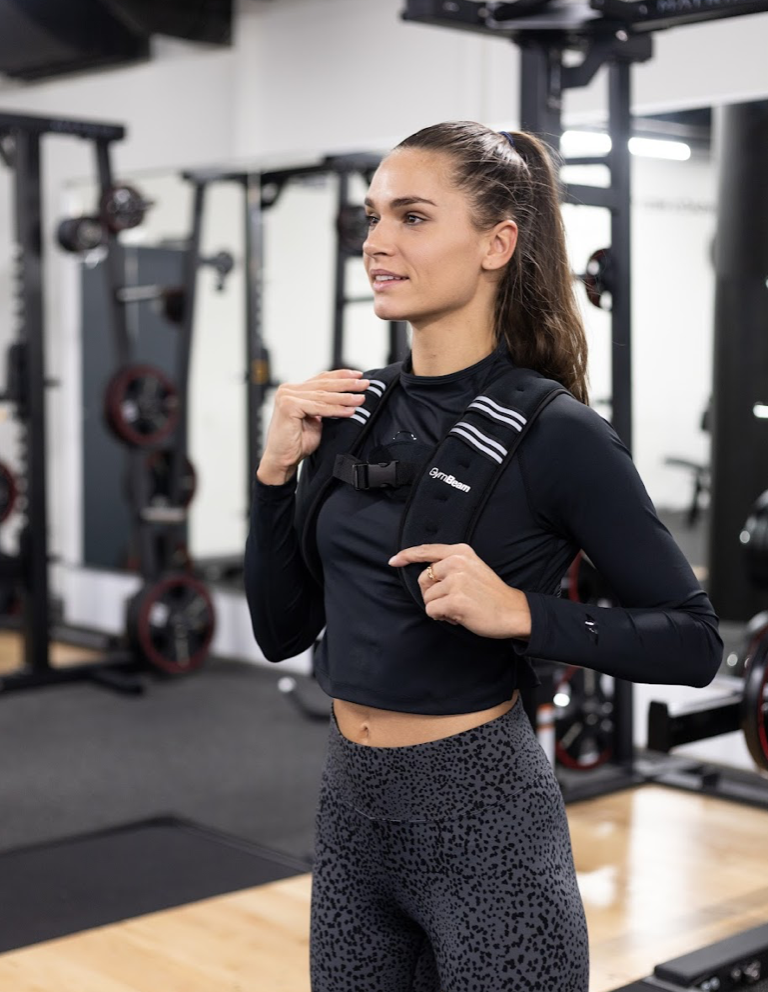Table of Contents
Have you heard of a weighted vest? If you have been in the fitness world for some time now, you probably at least know it exists. The rest of you may be asking yourself a question from the title, so what is this weighted vest, and why should you be interested at all? We will look for answers to this issue together. In addition to a simple description, we will also look at how such a weighted vest is used, why people train with it and what benefits it actually brings.
Meet a weighted vest
First of all, it must be said that it is a fitness tool that looks like a tactical vest for special forces. Unlike them, however, it is not bulletproof and does not contain pockets for grenades, knives, ammunition or other combat arsenal. Instead, it has pockets or an interior filled with something that increases its weight. That is why it has the adjective “weighted” in the name. In reality, it can be, for example, sand, steel plates or iron pellets.

The weight itself varies and you can usually find vests weighing 10, 15 or 20 kg. Although, manufacturers think of ladies or beginners as well, who can choose a vest weighing 3 or 7 kg.
The weight difficulty of the vest can be adjusted in some cases. It is also possible to find vests with detachable weights, such as the already mentioned models weighing 10 kg and more. You can easily choose the one that matches your current physical condition. [1]
You might be interested in these products:
Why use a weighted vest?
By now it’s probably clear that weighted vests are an ideal tool for those looking for ways to increase the intensity and difficulty of exercise. Your usual training routine can get reinvigorated and more efficient. The vests work great for exercises with your own weight, as they add more weight to you as the carrier without having to hold discs or dumbbells in your hands during training. The resulting load is thus carried by the whole body.

In addition to training with your own weight, you can also appreciate weighted vests during activities such as running, walking or fitness walks. If you are even more adventurous, you can take them for a hike. Some athletes also use weighted vests for a specific sport, like basketball, football or even tennis. They can also act as an affordable tool to help you expend more energy during activity and promote weight loss. [2]
How to pick a weighted vest and how heavy should it be?
You can find different types and models on the market, which differ mainly in weight. However, there are other parameters that you could consider before buying a weighted vest. These are mainly [3]:

- Weight source – you can find vests with a fixed weight or models whose load can be adjusted thanks to detachable weights
- Comfort – when choosing, notice whether the vest has shoulder pads to ensure comfortable wearing without feeling uncomfortable during long workouts
- Material – it is ideal to choose a weighted vest made of breathable material that wicks moisture well, or has ventilation
- Taking into consideration the weight of the vest – if you are going to use the vest for running, you will probably need less weight and vice versa. If you want to refresh your strength training, the choice should fall on a higher load
How heavy should a weighted vest be?
However, the choice of load itself is more a question of individual abilities. If your physical condition is at a good level and you want the vest for training with your own weight, which you already handle quite well, you can easily go for a heavier vest with a weight of 20 – 25% of your weight. [12]
On the other hand, if you have never had a weighted vest before, it will be better to start with less weight. For example, try 5% of your weight and over time you may move to a heavier model. Keep in mind that a heavier vest does not automatically equal a better vest. Excessive load can quickly tire you out, and overloading also increases the risk of injury. [9]
TOP 5 advantages of training with a weighted vest
Above is outlined why you should be interested in a weighted vest, and now let’s look at the five main benefits of exercising with it.
1. Burn more calories and promote weight loss
Given the extra weight, it’s no surprise that a weighted vest turns your workout into a bigger challenge. Adding a few extra pounds also helps increase exercise intensity, allowing you to burn calories more effectively and promote weight loss. This fact was also the subject of an American study on women aged 18-55 who underwent a six-minute walk test. As a result, a weighted vest weighing 10-15% of their body weight helped participants burn up to 13% more calories than walking without a vest. [5]
One smaller study from 2020 also speaks in favour of exercise with a weighted vest. It followed 72 people with mild obesity who spent 8 hours a day with the vest for 3 weeks. The primary outcome of the study was weight loss, which was also accompanied by lower body fat levels. Thus, the use of a weighted vest can be one of the effective means to support your training in order to lose weight. [6]
2. Increase your strength
A weighted vest can help increase strength and ultimately gain more muscle. This is similar to the Principle of Progressive Overload during strength training. The extra weight added by the vest will force your muscles to work harder, which can help them grow and get stronger.
3. Improve your running performance
Training with a weighted vest can be interesting not only for strength athletes, but also for runners. This statement is supported by a smaller study from 2015, in which runners improved their performance and endurance thanks to a weighted vest. However, the results of another systematic study from 2019 are also interesting. The researchers analysed the outcome of participants wearing vests weighing 5 to 40% of their body weight.
The study showed that those who had a lighter load were able to improve their performance over longer distances. On the other hand, runners with heavier vests were associated with better performance on short runs. However, it should be added that further research is needed to clearly confirm these results. [7] [13]

4. Strengthen your bones
Training, including the one with a weighted vest, can also have a positive effect on the strength, toughness or mineral density of your bones (BMD). This was also seen in one study from 2017, which looked at postmenopausal women training with a weighted vest for six weeks. It was found that after the research the bone density in the pelvis improved and the knee extensors got stronger. [8]
5. Improve stability
During training with a vest, you can also improve your posture, which can ultimately contribute to better stability and balance. If you add weight in the form of a vest to the upper body, you will force the stabilizing muscles to work harder during training to maintain balance. When tilting in any direction with the load, you will be quickly forced to balance the weight to avoid falling. In this way, you can help improve your body’s ability to maintain balance. It is useful for various sports, but also in everyday life. In addition, it becomes invaluable with age, when there is a greater risk of falls and subsequent injuries. [1]

How to use a weighted vest
Above you have already learned all the essentials. So it’s time to put it into practice and start using the vest itself for specific activities. If you are unsure, try to get inspired by these tips [10]:
- Endurance training – a weighted vest can be an ideal companion for activities such as running or walking. Feel free to take it with you for a longer walk or a bike ride.
- Strength training – put on a weighted vest before your classic strength training with your own weight, which you can reinvigorate and take to a new level. It is perfect for exercises such as push-ups, squats, lunges, planks, pull-ups or skipping rope.
- Housework – There are no limits to creativity, and if you don’t have time for training, you can wear your weighted vest during housework or cooking. Thanks to the greater load, it will allow you to burn a little more calories during this casual activity.
- Team sports – if you do team sports such as football, tennis, handball or anything similar, feel free to put on a lighter weighted vest before you start training. Again, with the greater load, the intensity increases and you will be even able to burn more calories.
- Warm up – you can use the weighted vest even just for the warm up phase of training, which according to some studies can increase efficiency and improve performance. [11]
Conclusion
A weighted vest can be an effective tool for those who want to update their training routine and increase its intensity. It is great for exercising with your own weight, but also for activities such as running, walking or fitness hikes. Wearing will allow you to burn more calories, can strengthen bones, increase strength, improve stability or running performance. Just choose an adequate weight and training can begin.
[1] 9 WEIGHTED VEST BENEFITS THAT'LL MAKE YOU WANT TO STRAP UP NOW – https://www.setforset.com/blogs/news/benefits-of-weighted-vests
[2] The Benefits of Weighted Vests and Body Weights – https://protips.dickssportinggoods.com/sports-and-activities/exercise-and-fitness/the-benefits-of-weighted-vests-and-body-weights
[3] Travis Edwards - Your Guide to Exercising with Weighted Vests – https://www.healthline.com/health/fitness/weighted-vest-benefits#precautions
[4] Brynne Boyke - Benefits of Weighted Vests – https://americanhomefitness.com/blogs/news/benefits-of-a-weighted-vest
[5] Daniel J. Green - ACE Research: Improve Walking Workouts with Weighted Vests – https://www.acefitness.org/continuing-education/prosource/march-2014/3695/ace-research-improve-walking-workouts-with-weighted-vests/
[6] Claes Ohlsson, Edwin Gidestrand, Jacob Bellman, Christel Larsson - Increased weight loading reduces body weight and body fat in obese subjects – A proof of concept randomized clinical trial – https://www.ncbi.nlm.nih.gov/pmc/articles/PMC7264953/
[7] Paul Macadam, John B Cronin, Erin H Feser - Acute and longitudinal effects of weighted vest training on sprint-running performance: a systematic review – https://pubmed.ncbi.nlm.nih.gov/31070108/
[8] Kanako Hamaguchi, Toshiyuki Kurihara, Masahiro Fujimoto, Motoyuki Iemitsu - The effects of low-repetition and light-load power training on bone mineral density in postmenopausal women with sarcopenia: a pilot study – https://www.ncbi.nlm.nih.gov/pmc/articles/PMC5414134/
[9] 6 THINGS YOU NEED TO KNOW BEFORE BUYING A WEIGHTED VEST – https://www.atreq.com/blogs/news/6-things-you-need-to-know-before-buying-a-weighted-vest
[10] Lianna Bass - Simply the Vest: 5 Weighted Vest Benefits for All Fitness Styles – https://greatist.com/fitness/weighted-vest-benefits#tips
[11] Avery D. Faigenbaum, James E. McFarland, Jeff A. Schwerdtman, Nicholas A. Ratamess, Jie Kang, Jay R. Hoffman - Dynamic Warm-Up Protocols, With and Without a Weighted Vest, and Fitness Performance in High School Female Athletes – https://www.ncbi.nlm.nih.gov/pmc/articles/PMC1748418/pdf/i1062-6050-41-4-357.pdf
[12] Rachael Schultz - Why Weighted Vests Can Benefit Your Work Out – https://www.mensjournal.com/health-fitness/why-and-how-you-should-work-out-weighted-vest/
[13] K R Barnes, W G Hopkins, M R McGuigan, A E Kilding - Warm-up with a weighted vest improves running performance via leg stiffness and running economy – https://pubmed.ncbi.nlm.nih.gov/24462560/


Add a comment